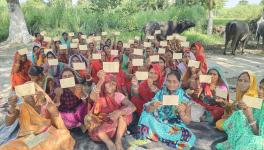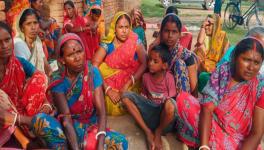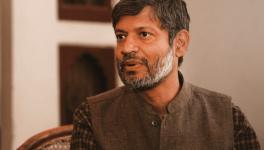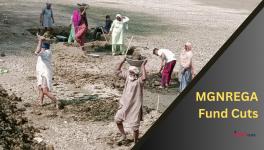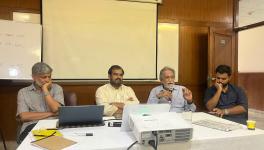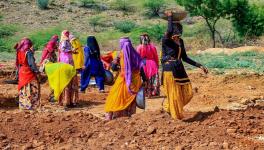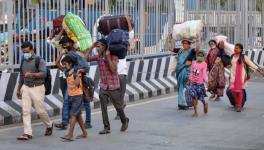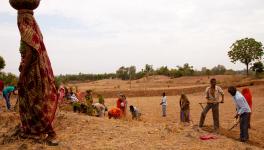Why was Niyamat Ansari Killed? : The Politics of NREGA and the Maoists
The gruesome murder of NREGA activist Niyamat Ansari has shocked the progressive civil society and political groups in the country. According to reports (one, two), Niyamat Ansari had exposed a case of corruption in NREGA and an FIR was lodged against a former BDO and another Panchayat Sevak of Manika block, Latehar (Jharkhand). On 2nd March 2011, Niyamat Ansari was picked from his house and beaten to death. The reports also suggest that the “real mastermind” behind the murder is a contractor who receives protection from local politicians. Some other media reports claimed that the local SP even made a statement saying that Niyamat Ansari had a “debatable past” and was wanted in several criminal cases. The Indian Express, however, published an apology for carrying such stories without much basis either in real events or the reports sent by DM and SP of Latehar (see here, point 13). It is known to all that most of these cases were lodged by the vested interests involved in fudging NREGA funds.
Most of the facts listed above are available in media and the vicious propaganda against Niyamat and others has been effectively countered by now. This note attempts to ask the more fundamental question about NREGA, civil society and the Maoists by going deeper into the problem of acute violence over NREGA in states like Jharkhand.
We propose, here, that the brutal murder of Niyamant Ansari constitutes a wake-up call for the progressive sections of Indian society towards at least two widespread tendencies among certain intellectuals and media. The first tendency concerns the dominant perception of NREGA in the liberal media as a “destabilising scheme” which orients fiscal policy and rural labour market towards disequilibrium. At the same time, “the discourse of NREGA-II has a disproportionate tilt towards tackling issues of migration, demand generation (through professional NGOs), high-value asset creation and skill generation so that one inexpensive act could compensate for historical injustices, agrarian crisis, unemployment, low education, drastically reduced public investment in agriculture and everything else” (see, ‘Musings on MGNREGA-II’ at http://www.pragoti.org/node/3908 for an extensive treatment of the politics behind NREGA-II). The neoliberal discomfort over NREGA cannot be more ironic since, in this version, NREGA merely disturbs the fiscal stance and distorts the labour markets. The neoliberal dilemma has nothing to do with the “fact of universal guaranteed employment” and its radical potential within the agrarian social structure and rural power configurations, even in its most limited avatar. As we have noted earlier about MGNREGA-II, “it is a way to de-emphasise the ‘political’ attributes and objectives of NREGA. It is routine yet profound; innocuous yet deep-reaching and procedural yet political. Hence, the only way to fight it is to expose it” (ibid.).
(T)he social support base of the Maoists comprise mainly dalits and adivasis who are mostly landless or small/marginal peasants. Anything that helps them improve their livelihood is not going to be touched by the Maoists since they are not in a position to provide a better economic option. Also, the Maoists have been encouraging the conduct of social audits since this helps in the creation of a new kind of democratic practice hitherto unseen in India. The people have a say in their own development which is probably coterminus with the Maoist conception of people’s power over their own matters. Overall, it seems that the NREGA is not a programme with which the Maoists in backward areas have a tense relation.
The purpose of the present note is limited to contest, at a preliminary level, the aforementioned understandings about employment guarantee in the Indian context.
Let us begin with the original moorings of NREGA, as it was conceptualised and passed by the parliament. To cut the story short, it is illustrative to note that the Right to Food Campaign, while welcoming NREGA 2005 for its impact on poverty, rural-urban migration, women’s empowerment, public assets in rural areas, rural power equations and bargaining power of unorganized workers; defined the 2005 act as ‘half hearted employment guarantee act’. After the victory of UPA-II, however, NREGA began to be treated as a “once and for all” rural development policy. The very fact that NREGA which, at its best, provides a minuscule survival relief to rural poor households has become such an important public policy catch for the Congress party reflects on the wretched state of our social and political reality. If the causal link between NREGA and electoral gain of the UPA-II is established, then from the demand side, it shows deep levels of desperation and inequality that inflicts our society as well as a crude manifestation of widespread marginalization of rural labour in India. From the supply side, post-NREGA-II, it reflects the mischievous and farcical processes of insulated policymaking and mainstream politicking in the country. It is also clear that the ruling class, while absolutely appropriating NREGA, is positioning NREGA-II as the final panacea for resolving numerous contradictions and conflicts facing the country that historical processes and neoliberal policy have created and sustained.
This leads us to the second aspect of the dominant perception of NREGA and the Maoists. The murders of Lalit Mehta and Niyamat Ansari (and, of course, many others) have something in common, that is, the clear involvement of the local contractors, government officials and the local landlords-turned-politicians. The supposed “contradiction” in the second tendency identified in the opening paragraph is the following: why should Maoists kill NREGA activists?
It is interesting to note that many of these statements contain (and, sometimes, expressed) an element of surprise that the Maoists have committed this heinous crime. Here, we need to take a closer look at the statement issued by the CPI (Maoist). The said statement absolves all other accused named in the FIR as innocents, including notorious criminals of the region. Lest this sounds like a conspiracy theory, we must clarify that Maoists have enduring interests in colluding with local contractors and receiving protection money, often taken in the form of a fixed “percentage” of total project amount. The Maoists, for this reason, have never objected to the rampant private contractors under NREGA, which is illegal according to the provisions of the act. Nor have they intervened in the matters of wage payments and decentralisation of powers to Panchayats. This is not only true of NREGA but many other government schemes and even landed interests in agriculture. No wonder, it is far more important for the survival of Maoists to oppose any state intervention in whatever form and ideological direction. A related feature of this Maoist project is its inherent closeness with the post-modern worldview and attempting to chart an ostensibly “independent”, backward-looking reinvention of the wheel. This project imposes more severe constraints on democratic choices of people and forces them to adopt the singular political way through military means.
References
Note
Get the latest reports & analysis with people's perspective on Protests, movements & deep analytical videos, discussions of the current affairs in your Telegram app. Subscribe to NewsClick's Telegram channel & get Real-Time updates on stories, as they get published on our website.










